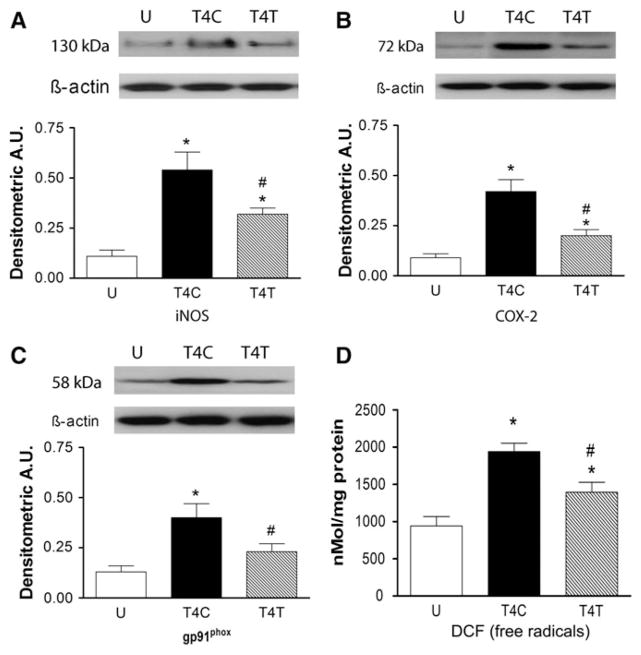FIG. 2.
The anti-α4 treatment decreases expression of inducible nitric oxide synthase (iNOS), cyclooxygenase-2 (COX-2), and gp91phox, and production of free radicals in the lung at 24 h after spinal cord injury (SCI). (A) iNOS expression was examined in uninjured rats and SCI rats (n = 4 for all groups; U, uninjured rats; T4C, T4 control SCI rats; T4T, T4 SCI rats treated with the anti-α4 monoclonal antibody [mAb]; A.U., arbitrary units). (B and C) COX-2 and gp91phox expression was also evaluated in these rats (n = 4 for all groups). (D) The concentration of 2′-7′-dichlorofluorescein (DCF) was assayed as a free radical marker in lung homogenates from the uninjured (n = 6), T4C (n = 4), and T4T (n = 5) rats (*significantly different from uninjured; #significantly different from SCI controls, p ≤ 0.05 by Student Neuman-Keuls test).

